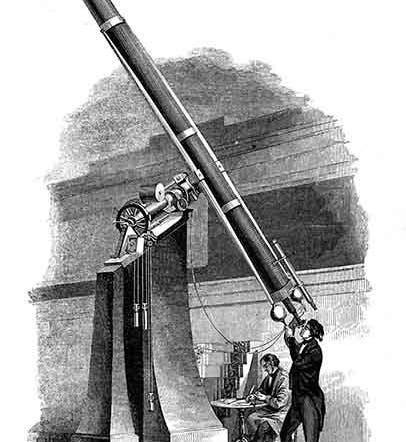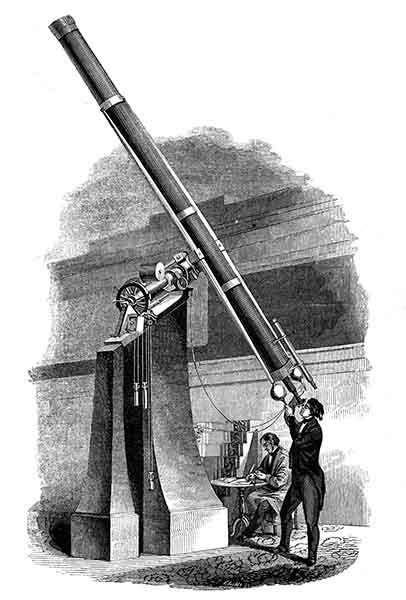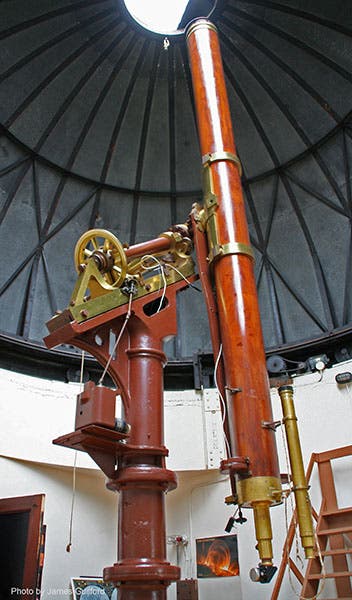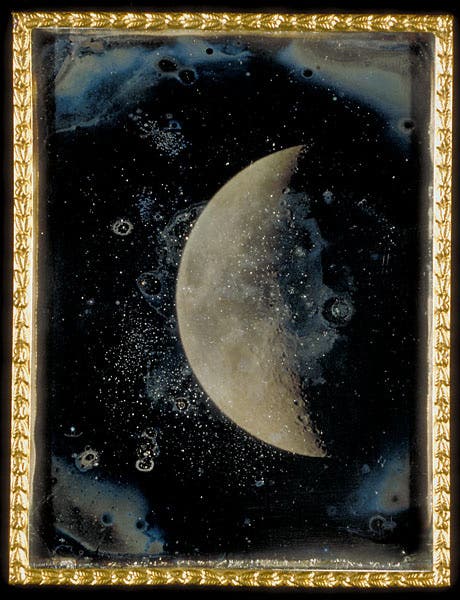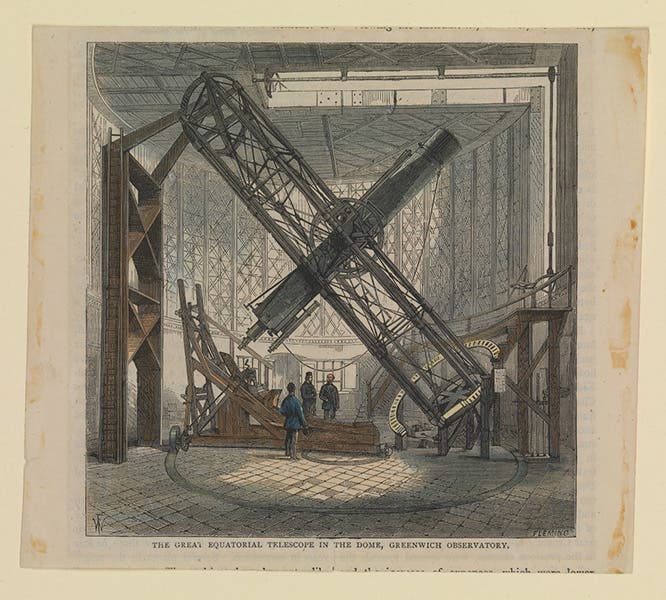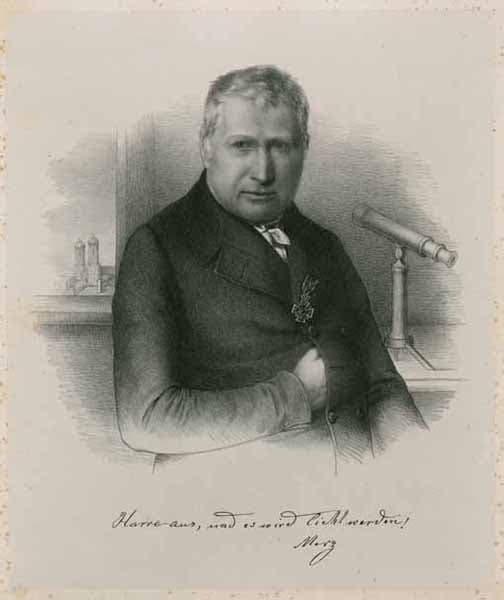Scientist of the Day - Georg Merz
Georg Merz, a German optician and telescope builder, was born Jan. 26, 1793, in Bavaria. He began working in an optical glass factory in 1808 when still quite young, and he must have shown great promise, for he was soon an assistant to the celebrated optician Joseph Fraunhofer at the Optical Institute in Munich. Merz stayed on when Fraunhofer died in 1826 (at the young age of 39), and when the other partner died in 1839, Merz, in association with Joseph Mahler, bought the Fraunhofer Optical Institute, and started selling their own telescope lenses and instruments under the name of Merz & Mahler.
Merz & Mahler was the second great name in telescope manufacturing (the first being that of Fraunhofer). Merz & Mahler made what we would call mid-size refractors, although at the time (the 1840s) they were the largest refractors in the world. One of the first telescopes they sold was an 11-inch refractor that went to the new Cincinnati Observatory in Ohio, founded in 1842, with their Merz & Mahler refractor, in its own dome, as the center of attention (first image). It was the largest instrument in the United States for the next 5 years. It is still there in Cincinnati, and still open to the public, making it the oldest operating telescope in the world (second image).
With the success of the Cincinnati instrument, Merz soon received a commission to build a telescope for the Harvard College Observatory, which had been founded in 1839, with William Cranch Bond as astronomer. Bond ordered a 15-inch refractor, which was installed in 1847, making it the largest telescope in the United States for the next 18 years (third image). It was immediately called the Great Refractor at Harvard, and often still is. With the 15-inch instrument, Bond and John Adams Whipple began to take the first daguerreotypes of the Moon. We see here one taken on Feb. 26, 1852, that is still in the glass stacks at Harvard (fourth image).
We show here one other Merz & Mahler instrument, the 12.8-inch refractor at Greenwich Observatory, for which Merz & Mahler furnished only the lens. It too was called the Great Refractor, and it remained so until it was replaced by a larger 28-inch refractor in 1896. It had an equatorial mount, unlike the two American instruments, so it was often referred to as the Great Equatorial. The names passed to the new 28-inch telescope when it was installed.
The era of the Merz & Mahler refractor was a brief one. In 1865, an 18-5-inch refractor, built by Alvan Clark and Sons of Cambridge, Mass., was installed in the Dearborn Observatory in Chicago, and the Clarks were off and running, with a string of “great refractors” in their trophy case, including the 36-inch Lick refractor, opened on Mount Hanilton in 1888, and the 40-inch Yerkes refractor, which saw first light in 1897.
Merz never saw the rise to prominence of the Clark refractors. He died in 1867, and the firm was taken over by one of his sons, and then, several cousins. The Merz firm went out of business in 1903. However, they made many smaller instruments which still survive at many university observatories throughout the United States. If you live near one of those, and you are interested, you should check out its oldest instrument. It might be a Clark, or it might well be a Merz & Mahler.
William B. Ashworth, Jr., Consultant for the History of Science, Linda Hall Library and Associate Professor emeritus, Department of History, University of Missouri-Kansas City. Comments or corrections are welcome; please direct to ashworthw@umkc.edu.

